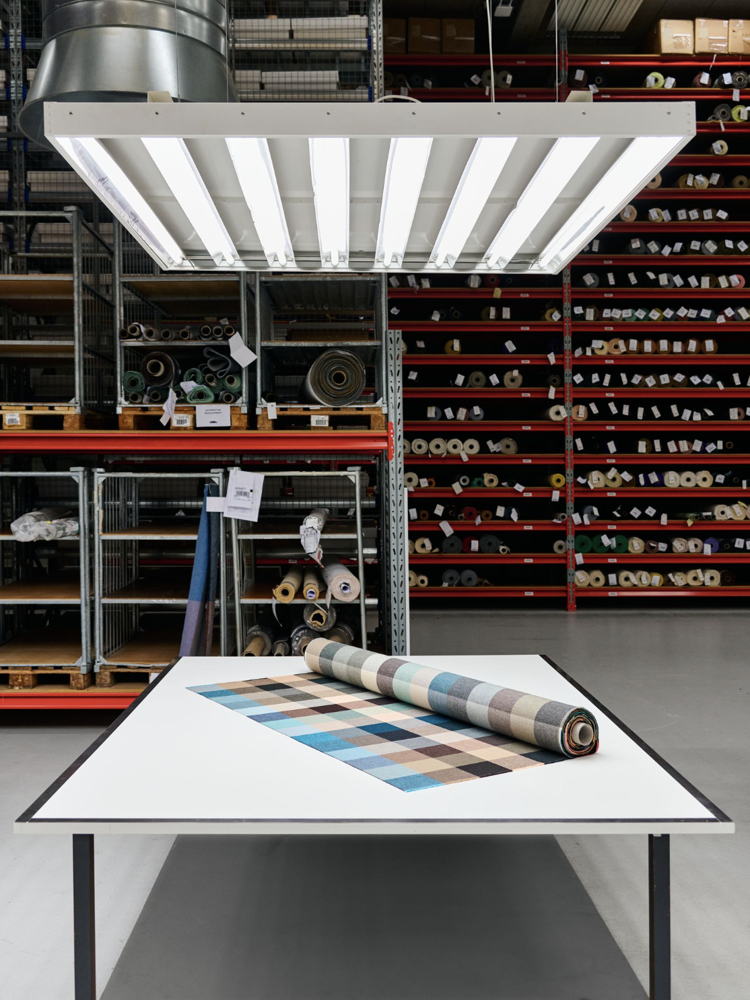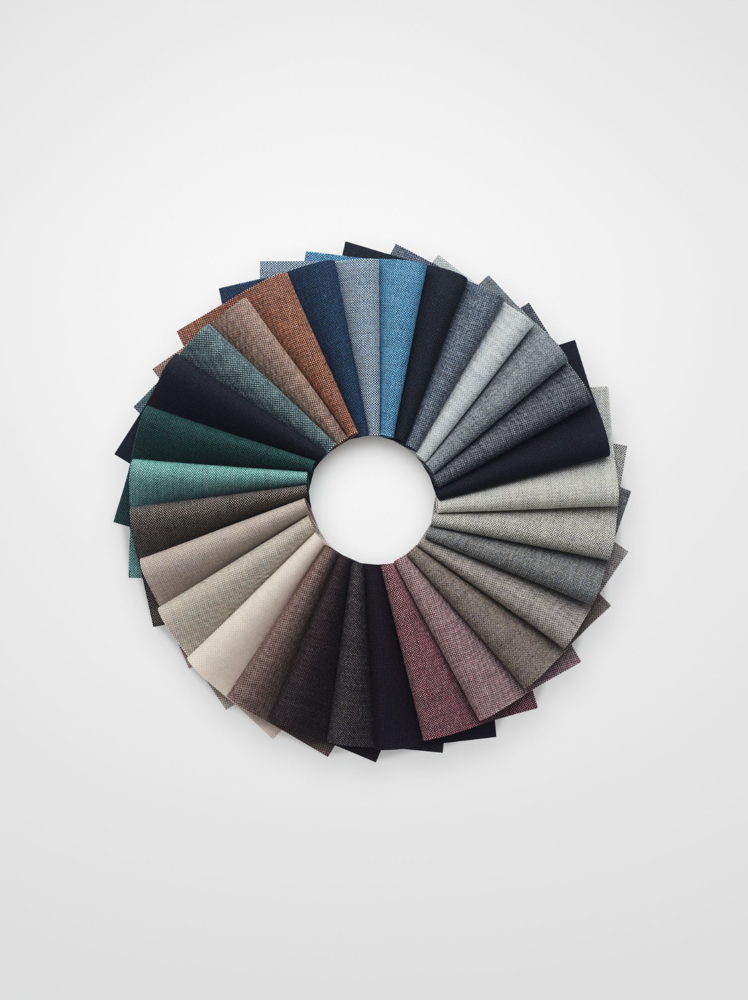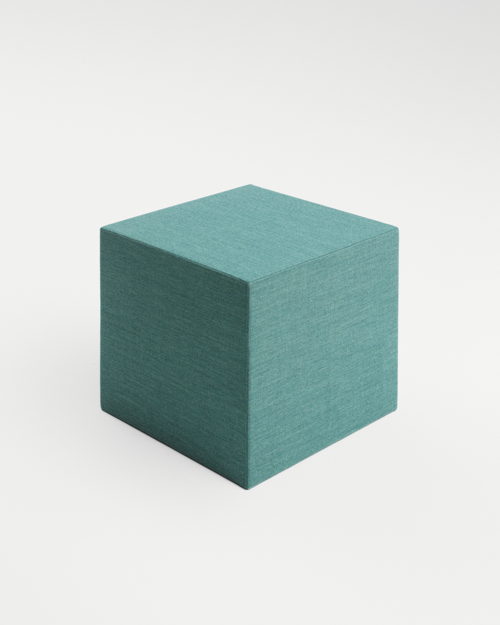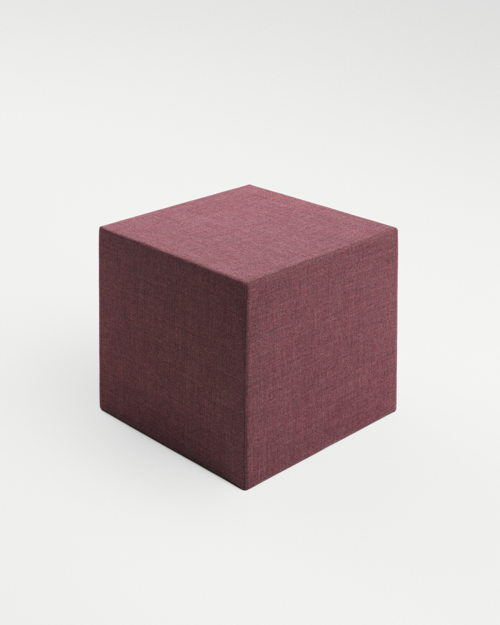Technicolour by Peter Saville
Kvadrat introduces Technicolour – a new wool upholstery textile born from Kvadrat’s continued creative collaboration with renowned British designer and artist Peter Saville. Designed and woven in England using locally sourced British wool, Technicolour is the result of a close partnership with manufacturer Wooltex, embodying a commitment to heritage, craftsmanship and innovation.
June 9, 2025
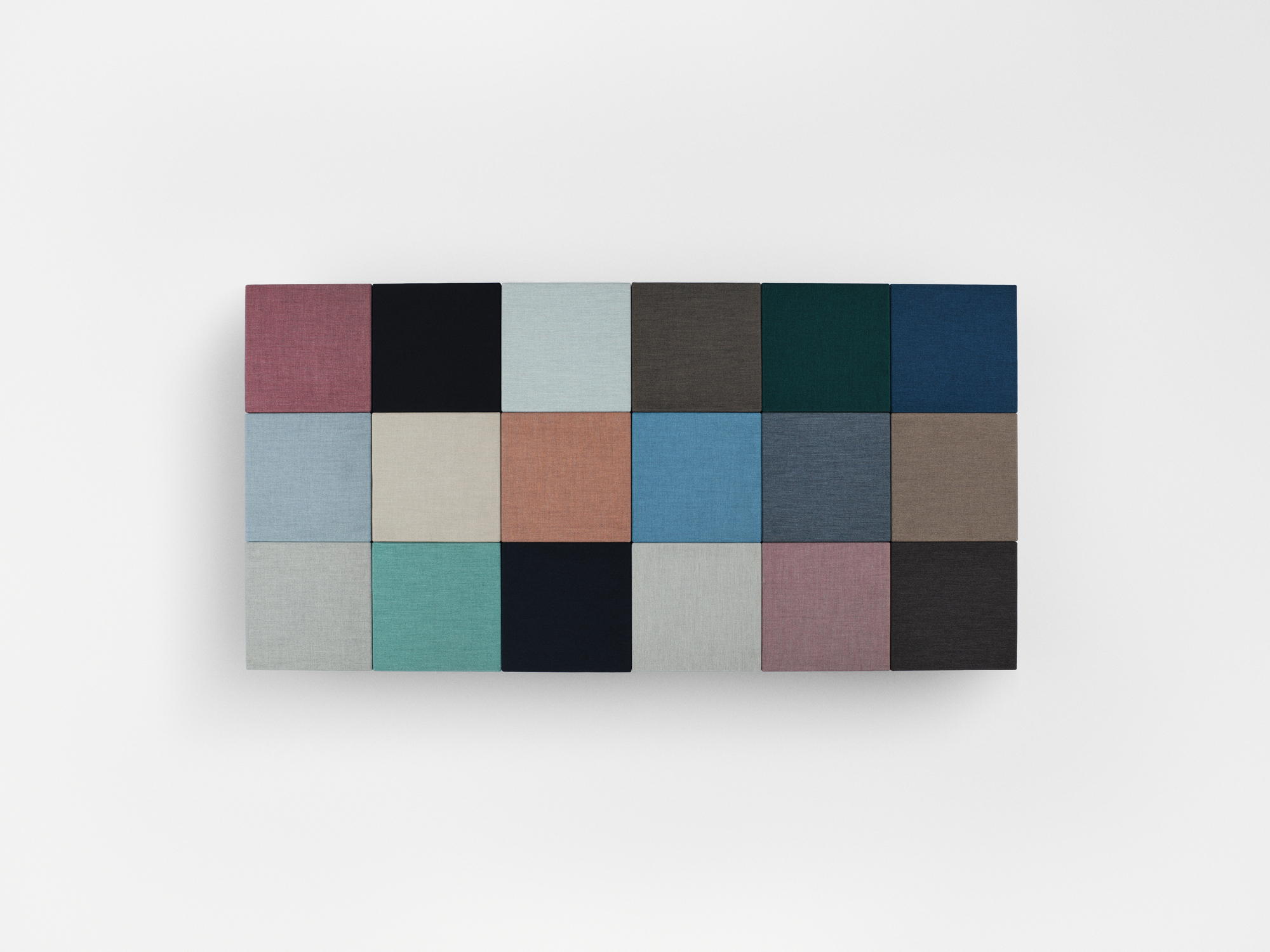
Building on the legacy of the original Technicolour collection launched in 2021, Technicolour continues to unfold the narrative of the vivid spray markings on flocks of sheep in pastures, that first caught Peter Saville’s imagination during childhood holidays in North Wales.
Technicolour is the first Kvadrat textile produced entirely in-house at Wooltex. From fibre dyeing to spinning and weaving, every step is completed at Wooltex’s vertically integrated mill in Huddersfield, using British wool and reflecting local heritage.
Developed with Saville, the colour system drives the design. Behind Technicolour’s new vibrant expression lies a simple yet sophisticated system which unlocks a full range of 30 colourways from only ten base colours. Inspired by how colours are adjusted digitally, it brings together the five bold hues of livestock marking spray colours – orange, blue, green, yellow and magenta – with five neutrals: black, brown, a light and dark beige, and undyed wool.
Peter Saville: “I like it when the character and aesthetic of a product inherently emanate from how it is made. It’s very easy to detach interior decor from the reality of outside life; one doesn’t tend to sit on a chair and think of sheep. With Technicolour, the colour system, production processes and heritage are visible in the textile, revealing its origin story.”
Technicolour represents a meeting of heritage and innovation. The textile intertwines local culture, materials and landscapes. The wool textile industry was born in Huddersfield—where Wooltex is based— during the Industrial Revolution (1760 – 1840) and due to the region’s geography and climate, it remains the heart of wool production in the U.K. The area, surrounded by the Pennine hills and with weather systems coming from the Atlantic, experiences higher levels of rainfall than normal. These conditions are perfect for wool production, as moisture plays a very big part in the manufacture of wool. In addition, the rock formations and geology of Huddersfield result in an abundance of ‘soft’ water, which is vital for the finishing of woollen textiles.
-LOW_SRGB_JPEG.jpg)
Wooltex, partly owned by Kvadrat, draws on its rich heritage while embracing the future through investment in new technology and a commitment to innovation. In 2022, Wooltex installed a new yarn spinning facility—the first of its kind in the UK in decades. This investment transformed Wooltex into a fully vertical mill, with all production processes now managed in-house. This has provided the flexibility and resources to explore and innovate the colour, hand, environmental impact and heritage of the textile. Technicolour is the first textile to be produced from start to finish at Wooltex — it is a true visual and haptic expression of the industrial processes in textile production.
Colour system
Woollen tops are initially dyed in nine colours and combined with the undyed wool in specific percentages, using advanced machinery at Wooltex capable of blending an unprecedented number of colours at fibre level. It is then spun into yarns, of which there were over one hundred different variations. Twenty-one yarn colours were then selected and woven together to make another hundred possible colour combinations on a “colour blanket”, before being whittled down to a final thirty colourways. Each colourway unites two yarns in a plain weave construction, infusing the textile with signature vitality.
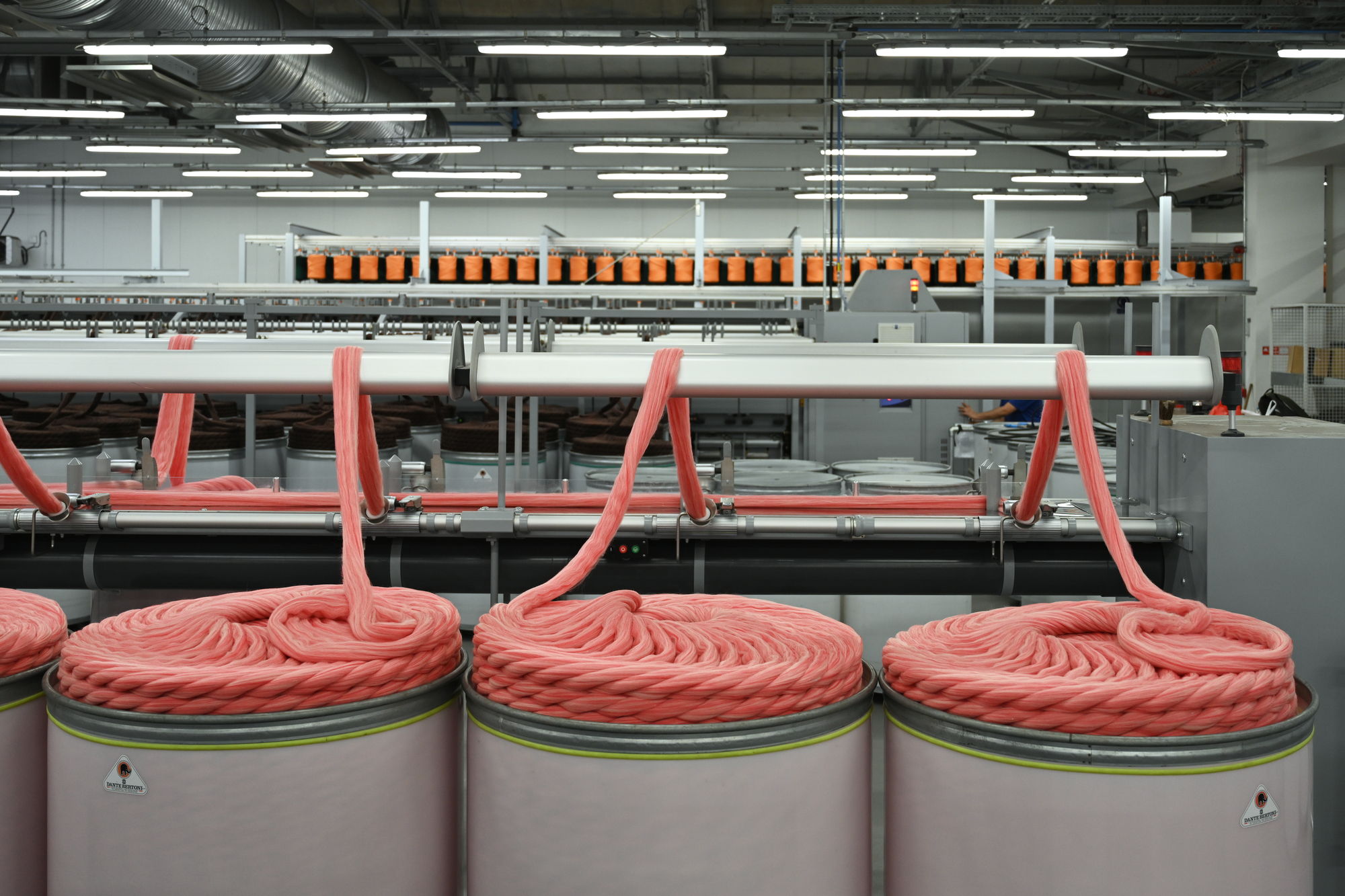-LOW_SRGB_JPEG.jpg)
Stine Find Osther, VP Design Kvadrat: “The colour system offers infinite colour narratives. Inspired by Peter’s knowledge as a graphic designer, we have approached the blending of colour as it happens inside the computer. We took a graphic tool and made it tactile.”
British wool, breakthrough softness and resource innovation Woven from 100% English worsted wool, sourced locally in Bradford, Technicolour redefines the expectations of British wool, which is traditionally valued for strength but not softness. Through extensive in-house testing of fibre thickness, twist levels and blends, Technicolour achieves the optimal hand whilst maintaining all the other testing parameters, such as abrasion, pilling and fabric strength.
The vertically integrated approach at Wooltex has optimised each stage of production: the efficient colour system requires fewer dyed colours, and 30% of the wool used is undyed. Dyeing machines use less than half the amount of water per kilo compared to older models, with 85% of that water recycled. More than half of all fabric finishing is now carried out without the need for water or chemicals. Waste fibres and selvedge are reused in various applications, including Kvadrat’s Rewool 2 by Margrethe Odgaard.
Campaign
To mark the launch of Technicolour, Peter Saville, Kvadrat and the creative agency Graphic Thought Facility have collaborated on a campaign. It highlights the new colour system, explicitly referencing the textile colour blanket created by Wooltex during the curation phase. The system is also brought to life in a series of images including sculptural installations of upholstered squares—reminiscent of Donald Judd. These pieces will travel across Kvadrat’s global showrooms.
Notes to editors
About Peter Saville
Peter Saville exists in a territory of his own. His practice occupies a space between art and design, and his unparalleled approach has resulted in a unique contribution to culture. This hybrid position came into being partly through the unprecedented autonomy afforded to him as co-founder and art director of the legendary independent UK label Factory Records. Unlike most ‘commercial artists’ of the time and indeed since, Saville was free to design without approval. Making his art in the context of mass production, he accessed an audience through pop music, best exemplified in the series of record sleeves he created for Joy Division and New Order between 1979 and 1993.
His achievements were celebrated in The Peter Saville Show at the Design Museum in London in 2003. His first major show in a contemporary art museum was at the Migros Museum in Zurich in 2005. He continues to exhibit internationally.
Technicolour is the latest milestone in a multidimensional collaboration between Peter Saville and Kvadrat, which spans more than a decade and includes contributions to the brand’s visual identity, showroom design, editorial projects, and campaigns.
About Wooltex
Wooltex, co-owned by Kvadrat, is one of our longest standing partner suppliers and is a specialist in the production of natural wool textiles. Located in a part of the UK that has been at the heart of textile manufacturing for centuries, it is a place where tradition and innovation go hand in hand. Wooltex collaborates closely with the design team at Kvadrat to push the boundaries of textile design. As part of this journey, the mill has driven vertical integration, insourced all the production processes, and upgraded its machinery to minimise energy and water use.
